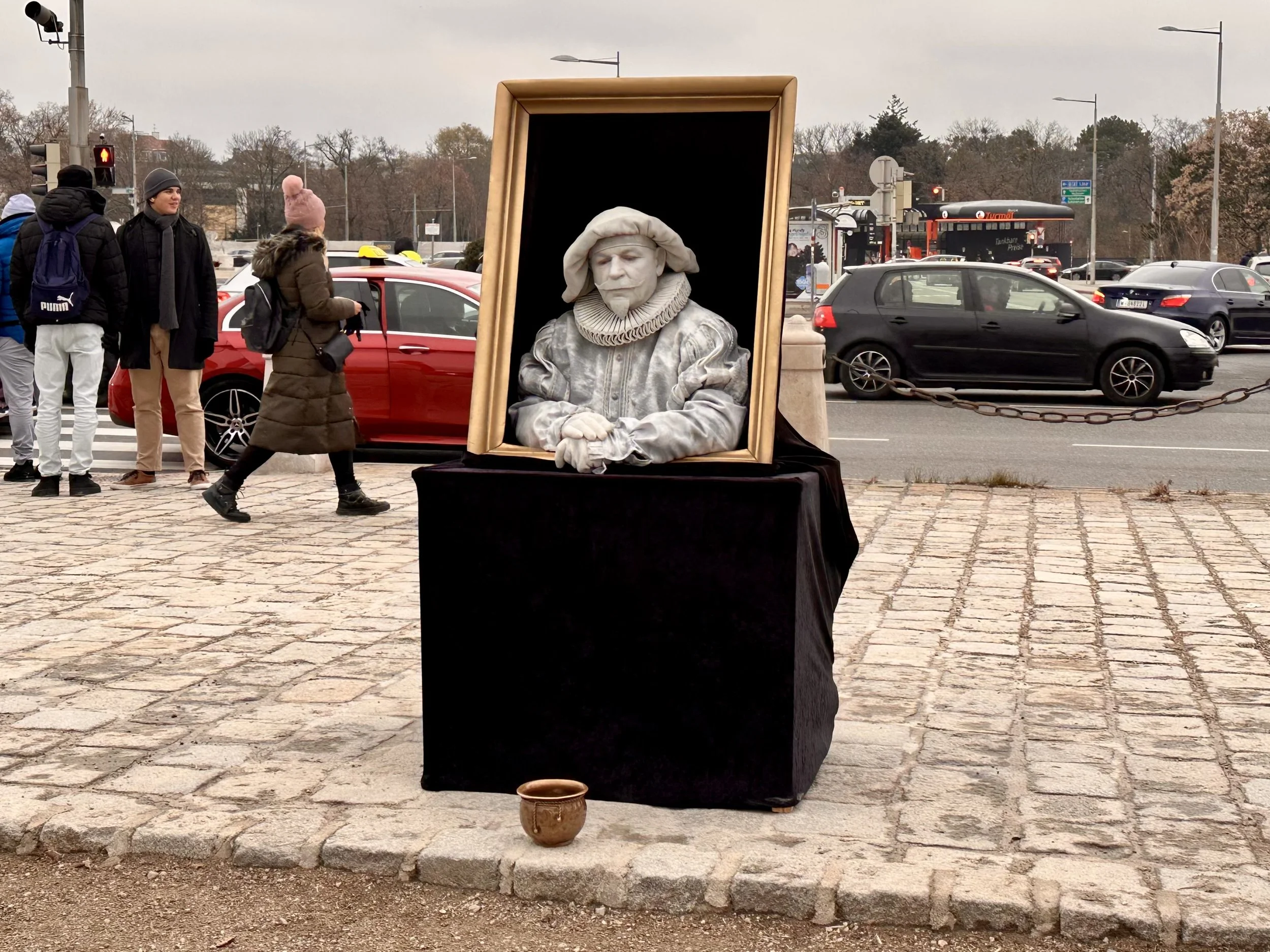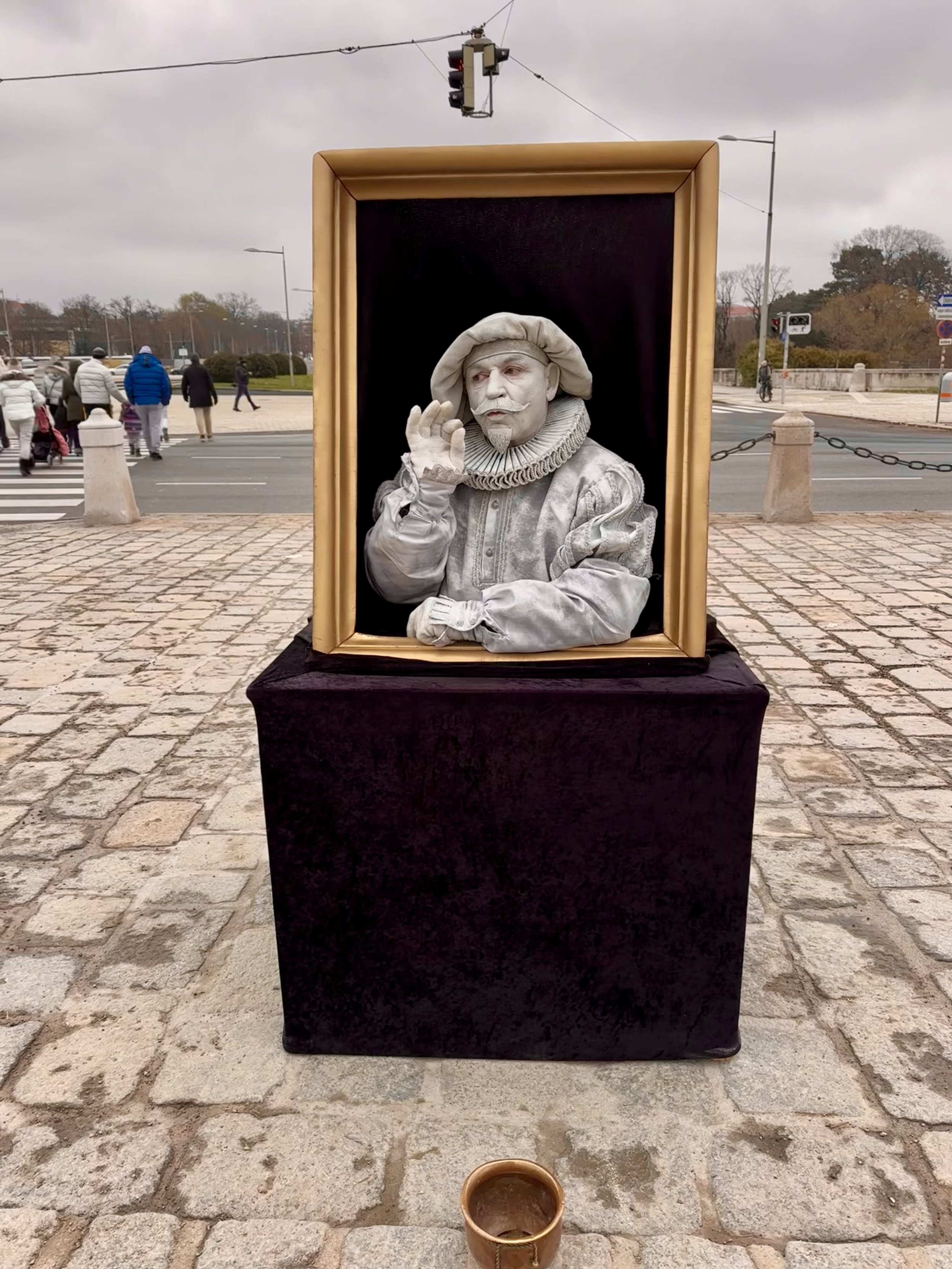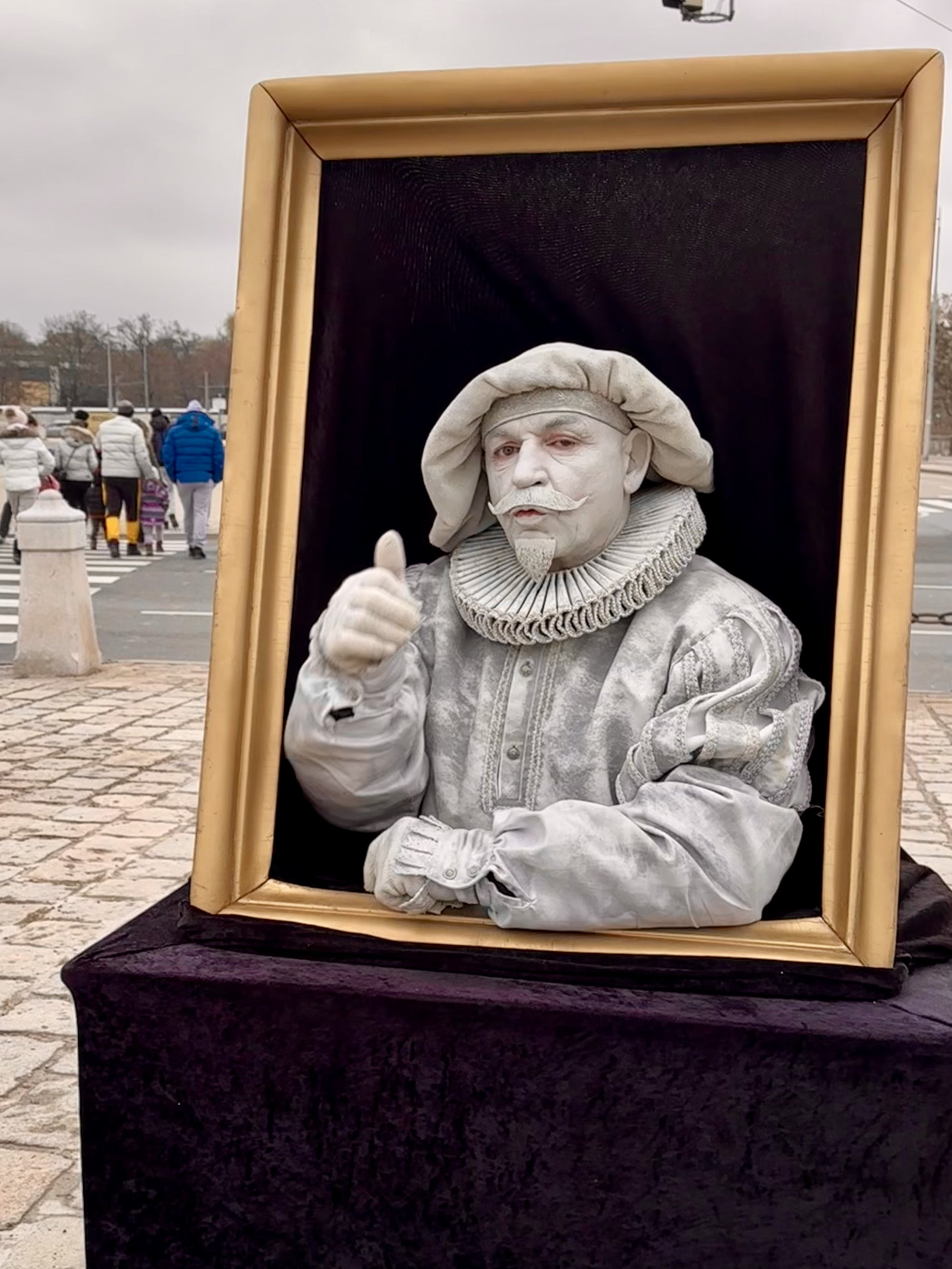Schönbrunn Palace
Schönbrunn Palace is a UNESCO World Heritage site and one of the top tourist attractions in Austria. Whereas Hofburg was the Winter Palace of the Habsburgs, Schönbrunn was their Summer Palace.
Who were the Habsburgs, you may ask? They were a major European dynasty from the 15th to the 20th centuries. In those days, the Tudors ruled England, the Romanovs ruled Russia, and the Habsburgs, the most powerful of the bunch, ruled the Holy Roman Empire (most of what is now Western Europe) and the Spanish Empire. Interestingly, the Habsburgs expanded their holdings and power not by waging war, but by having lots of children and marrying them off. So the royal families needed large houses with room for all of their kids.
Schönbrunn is just eight kilometers from the Innere Stadt. For us, it was an easy 20-minute ride on the subway. Just inside the palace gates was a huge lighted star marking the entrance to the Christmas market. It was a cold, gray day, but there were plenty of people enjoying the market. We browsed the stalls until it was time for our tour of the palace.
The palace was originally a hunting lodge for the royal family, but it was remodeled and decorated in the mid-1700s for Empress Maria Theresa. The last Habsbugs to live in the palace were Emperor Franz Joseph, his wife Elisabeth (“Sisi”), and their four children.
On the self-guided audio tour, we walked through 40 of the palace’s 1,400+ rooms. We saw a variety of personal apartments and staterooms, most of them decorated in ornate Rococo style. Each room had a beautiful ceramic stove for warmth. Schönbrunn is sometimes compared to Versailles, and indeed the magnificent Great Gallery reminded us of the French palace. But my overall impression was that Schöenbrunn was not as over-the-top as Versailles. The two palaces are quite different, and both are impressive and worth a visit.
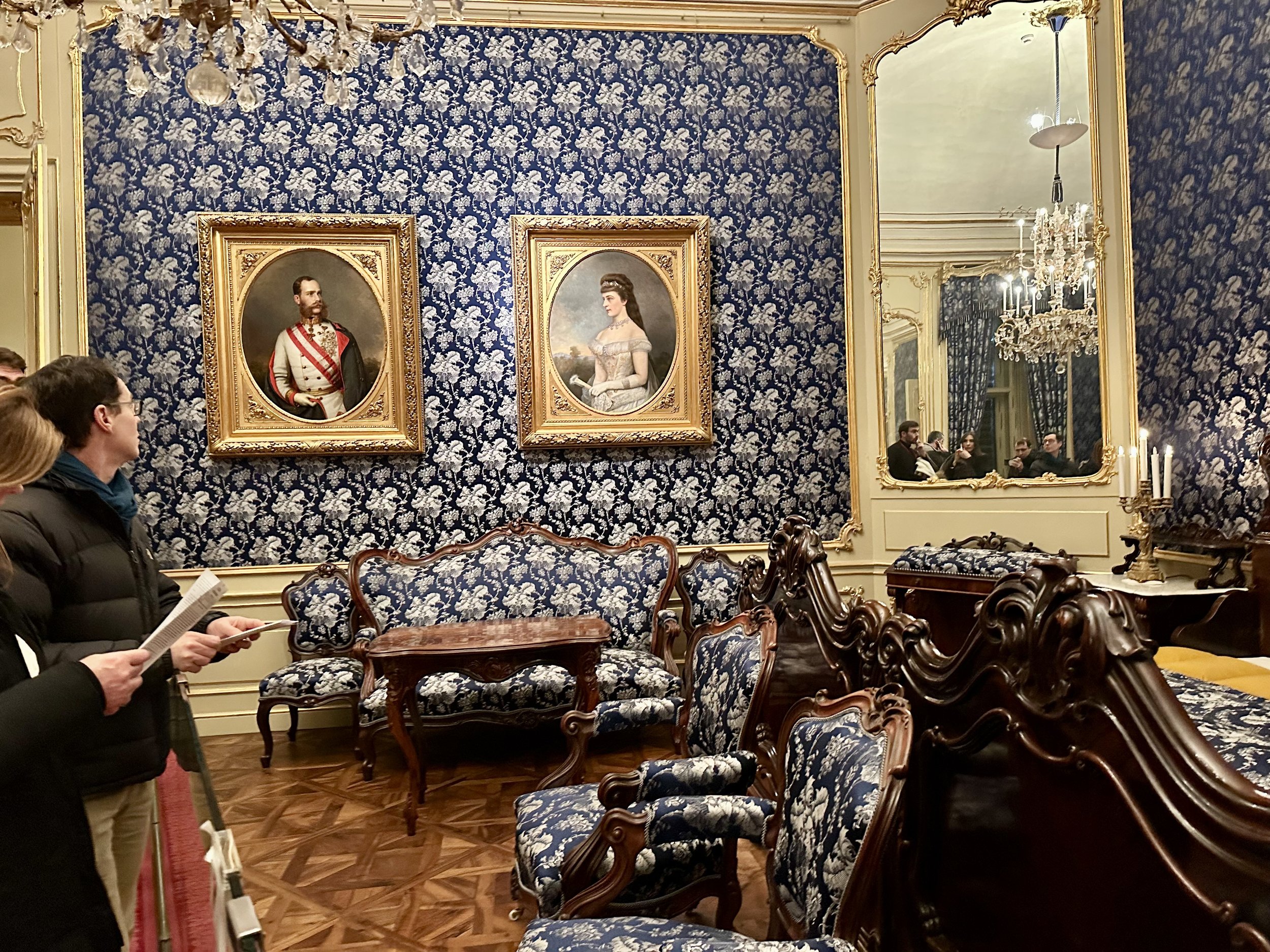
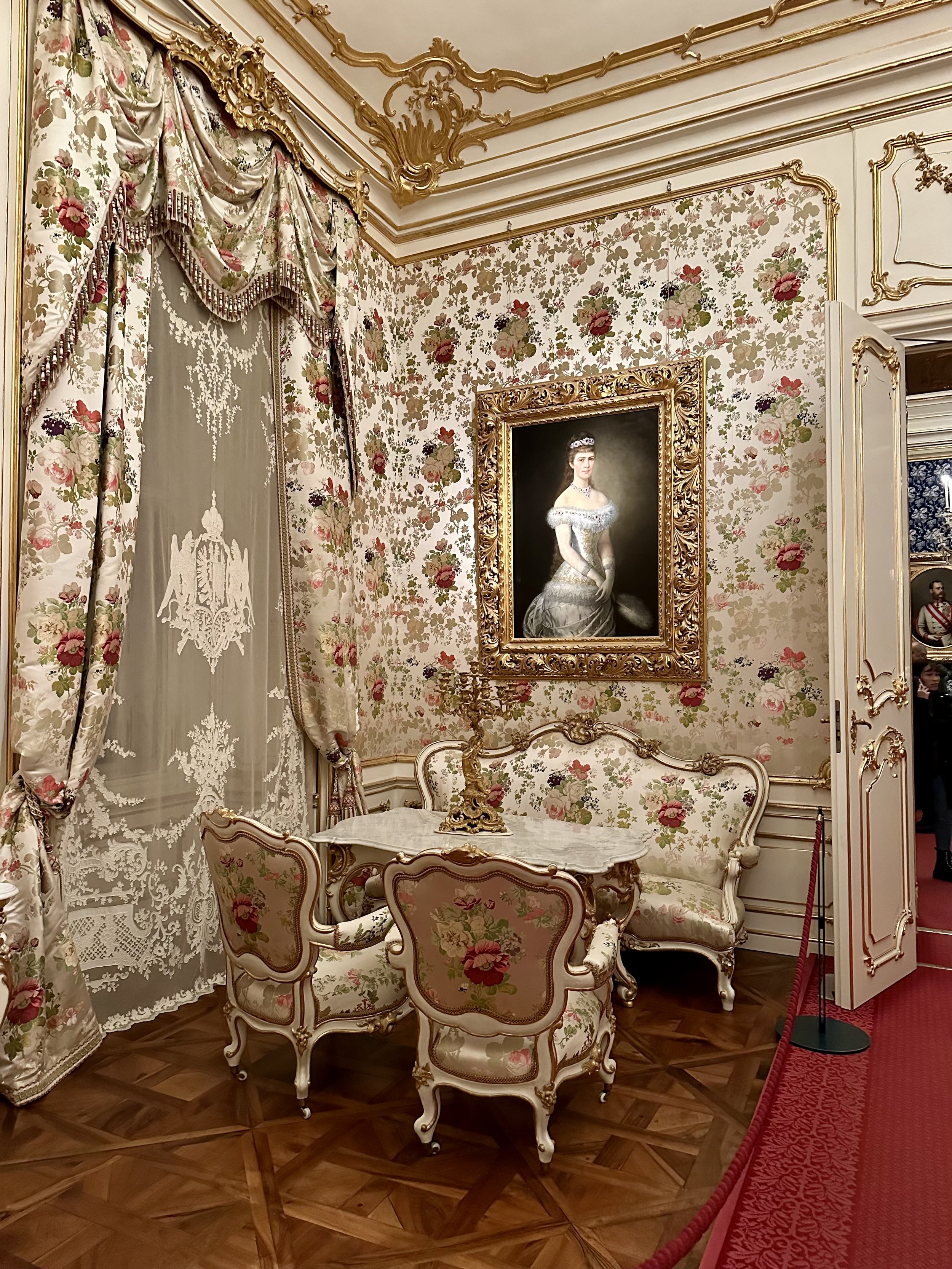
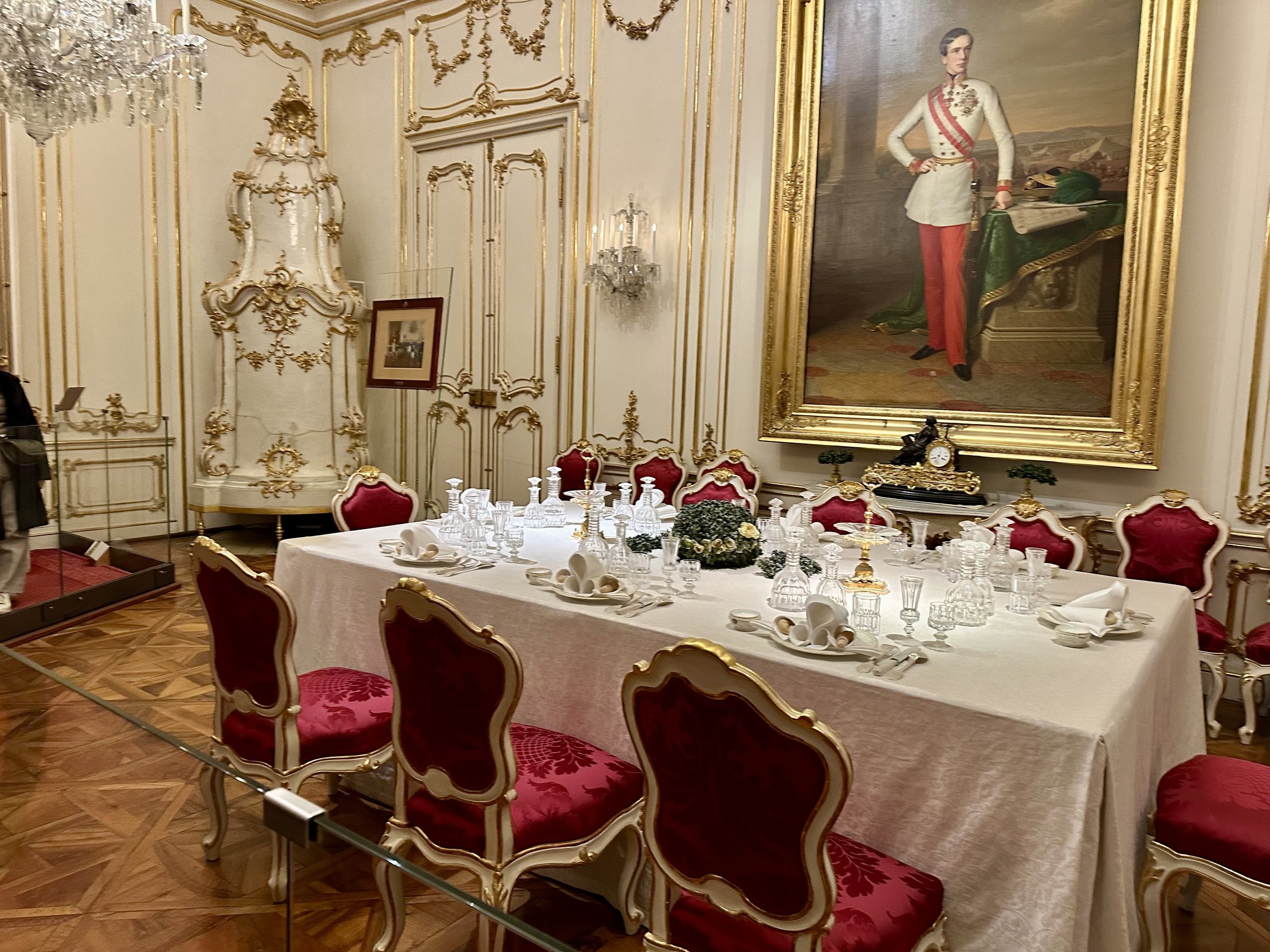
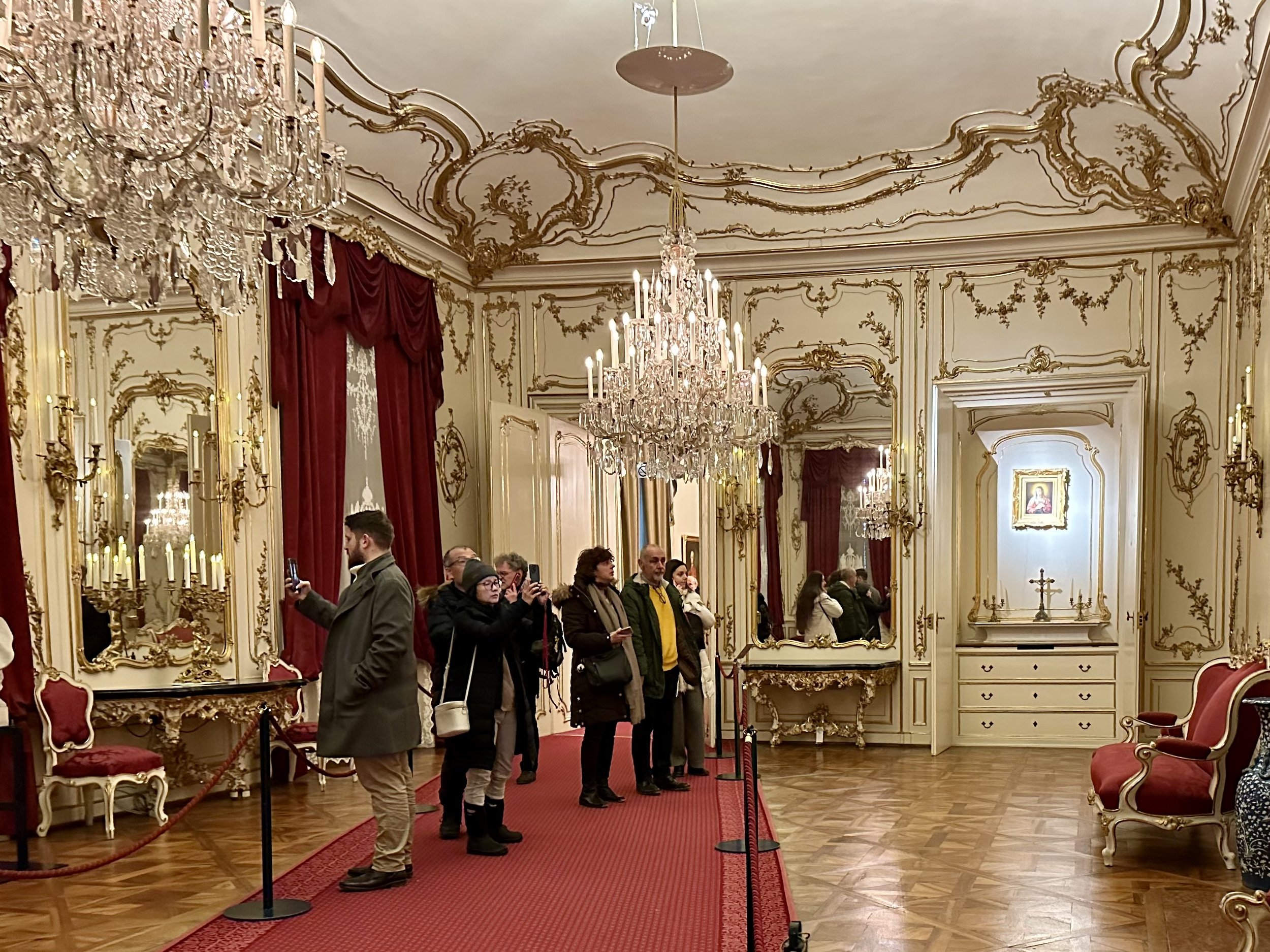
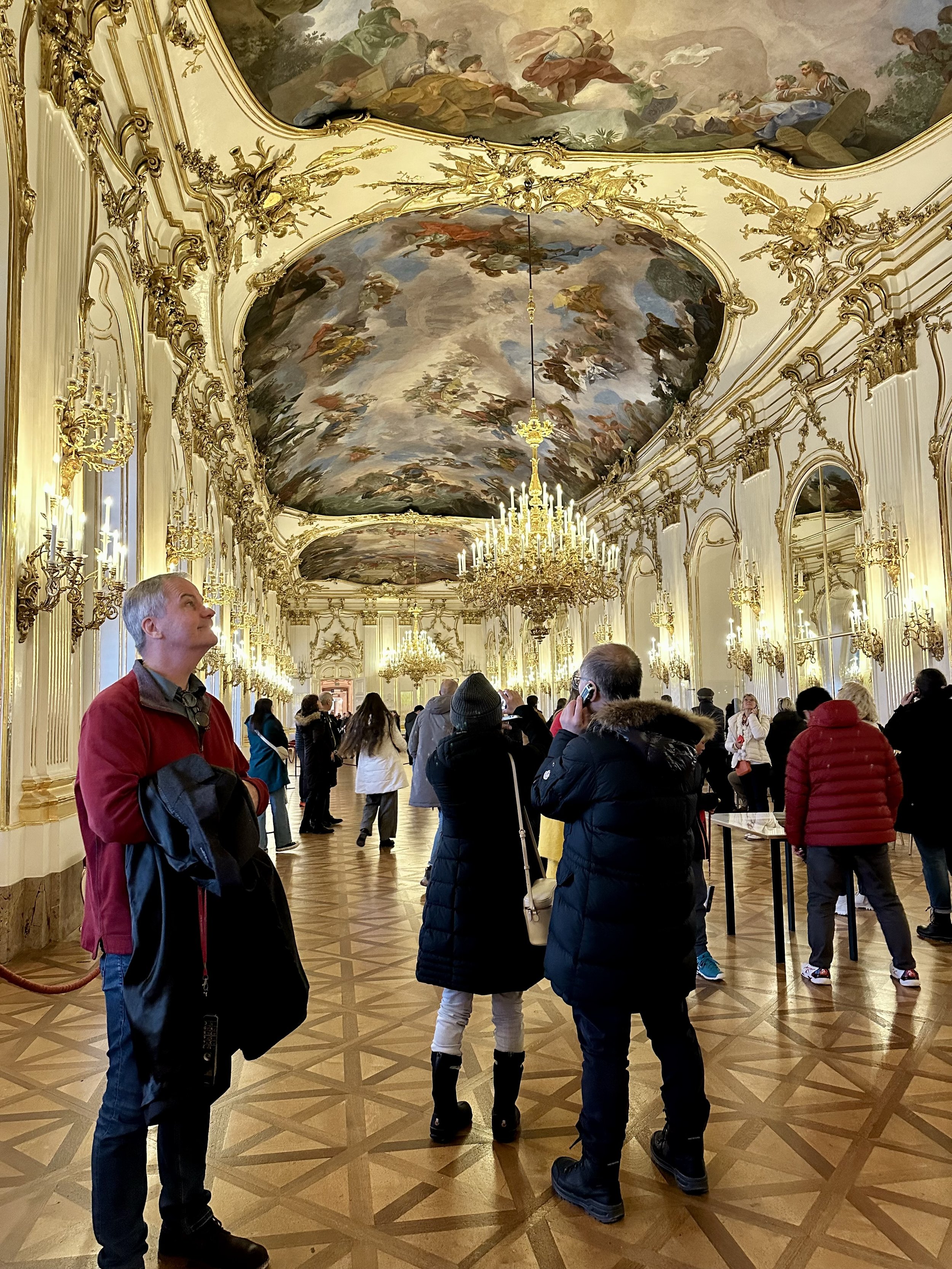
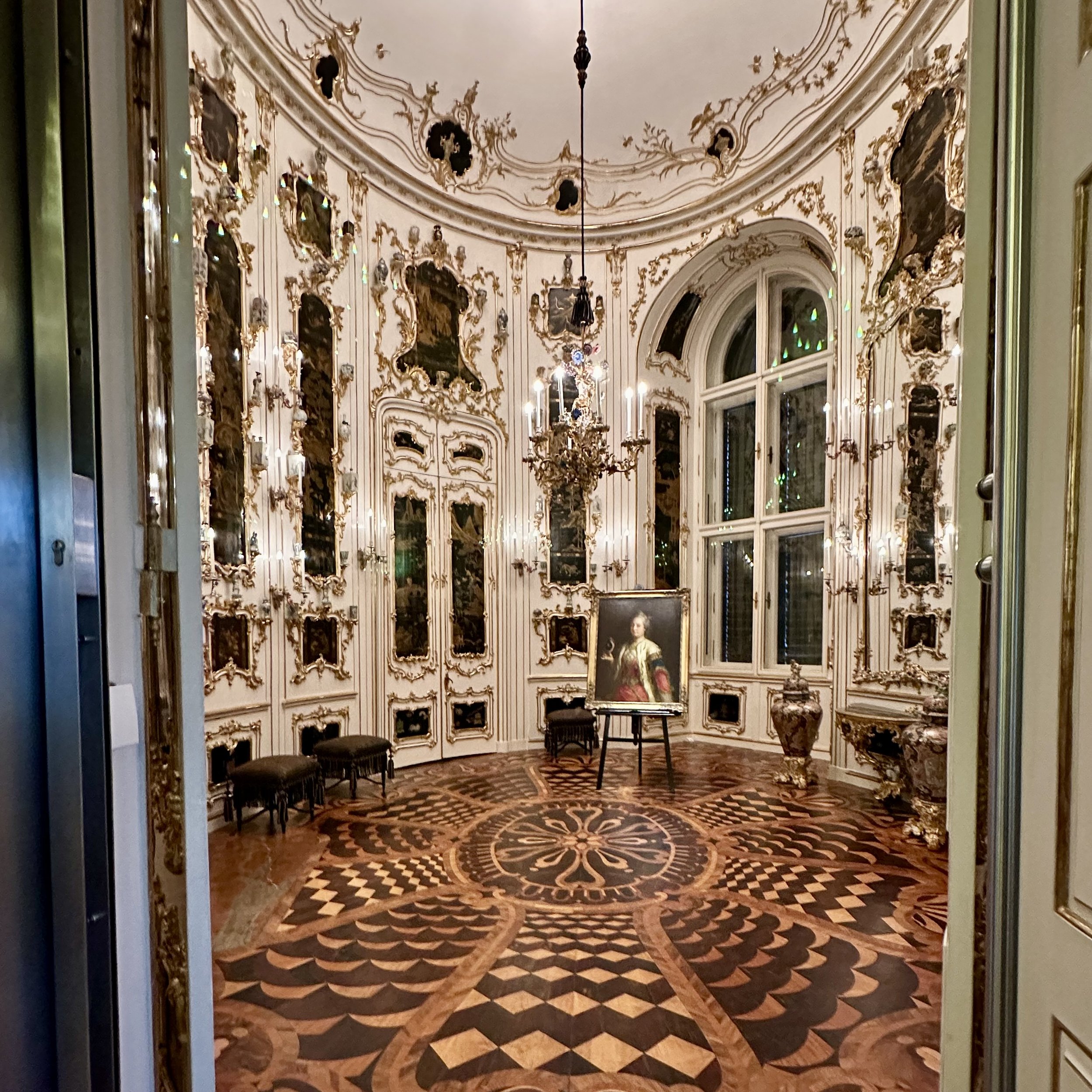
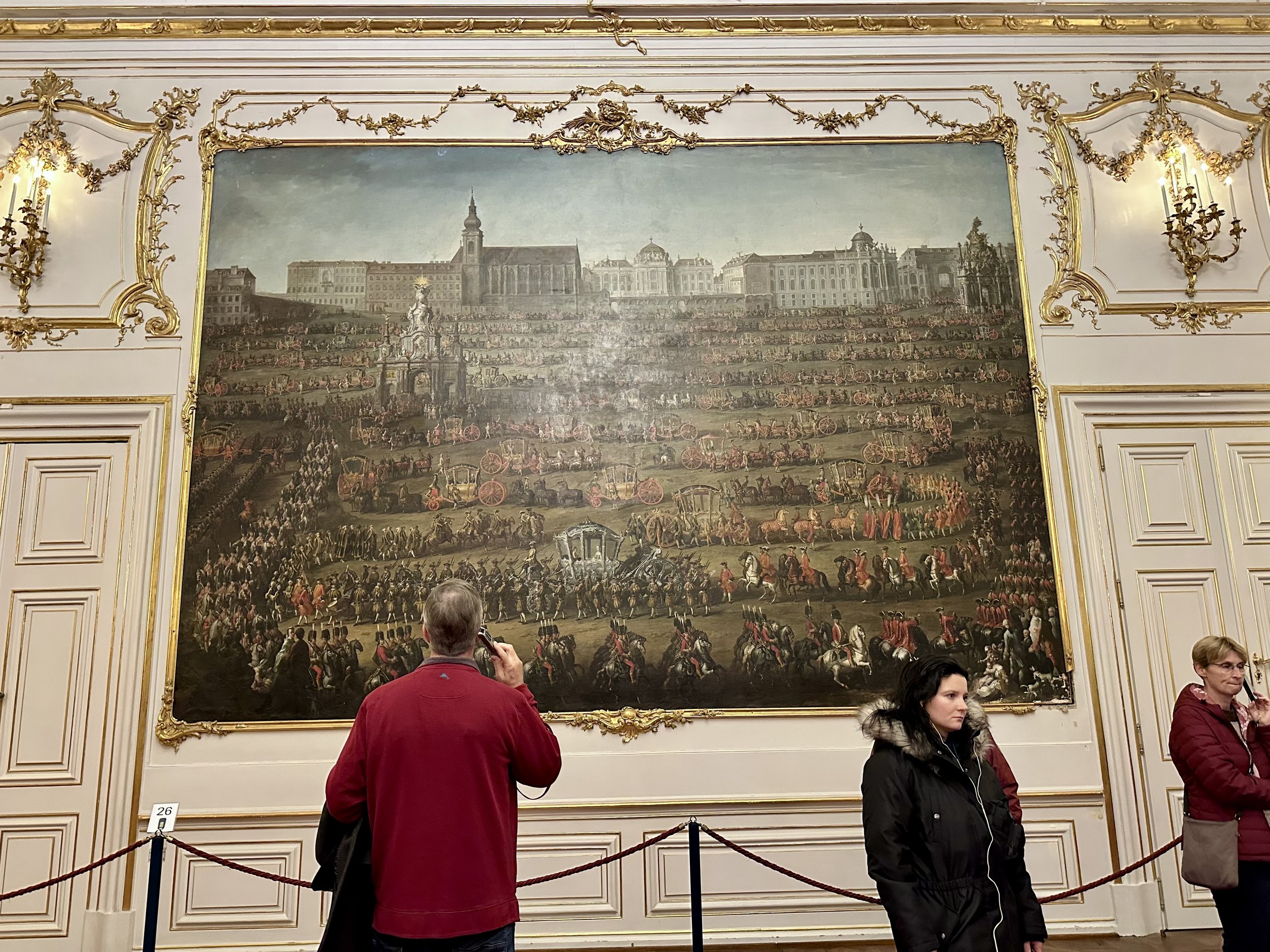
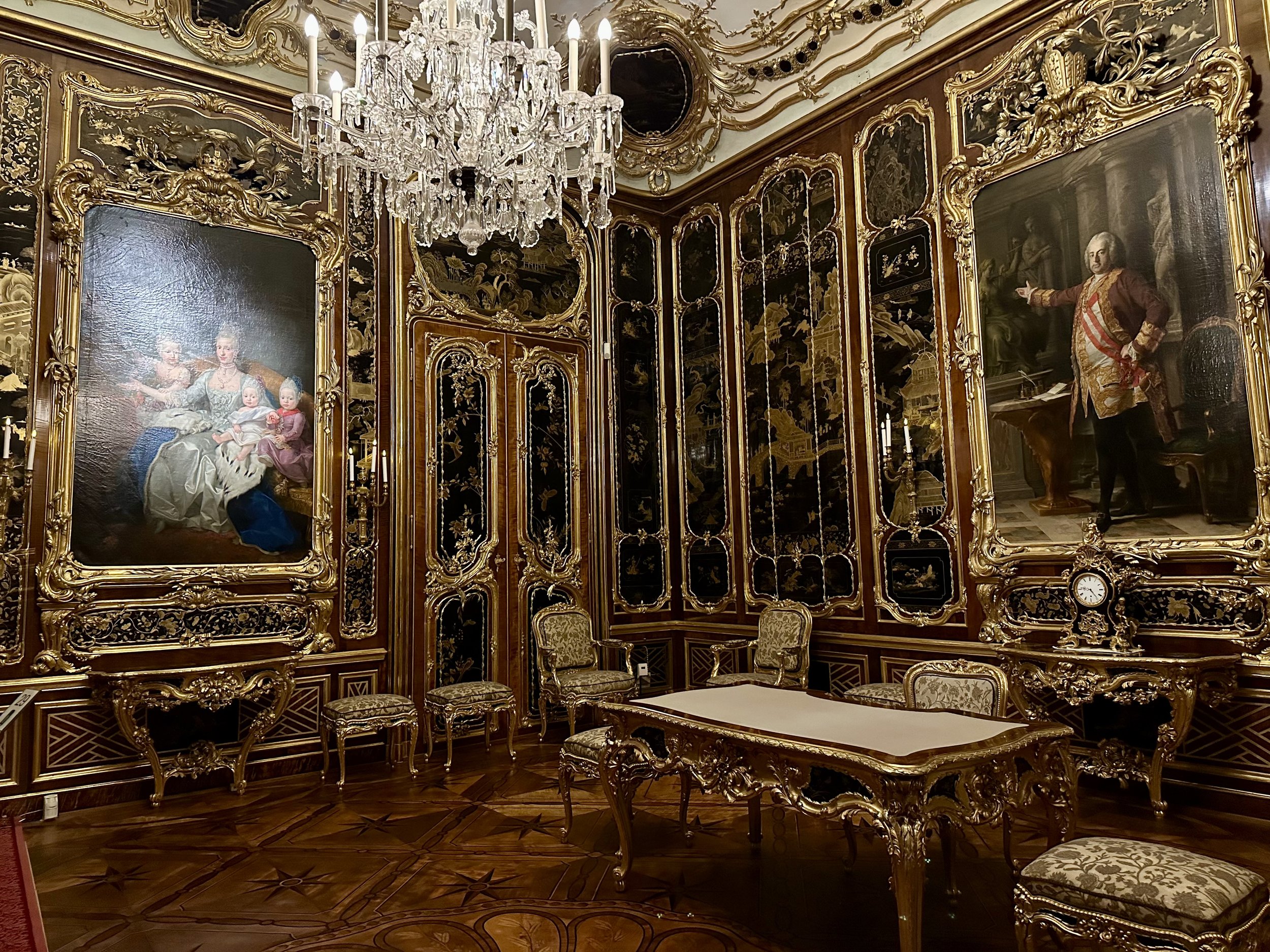
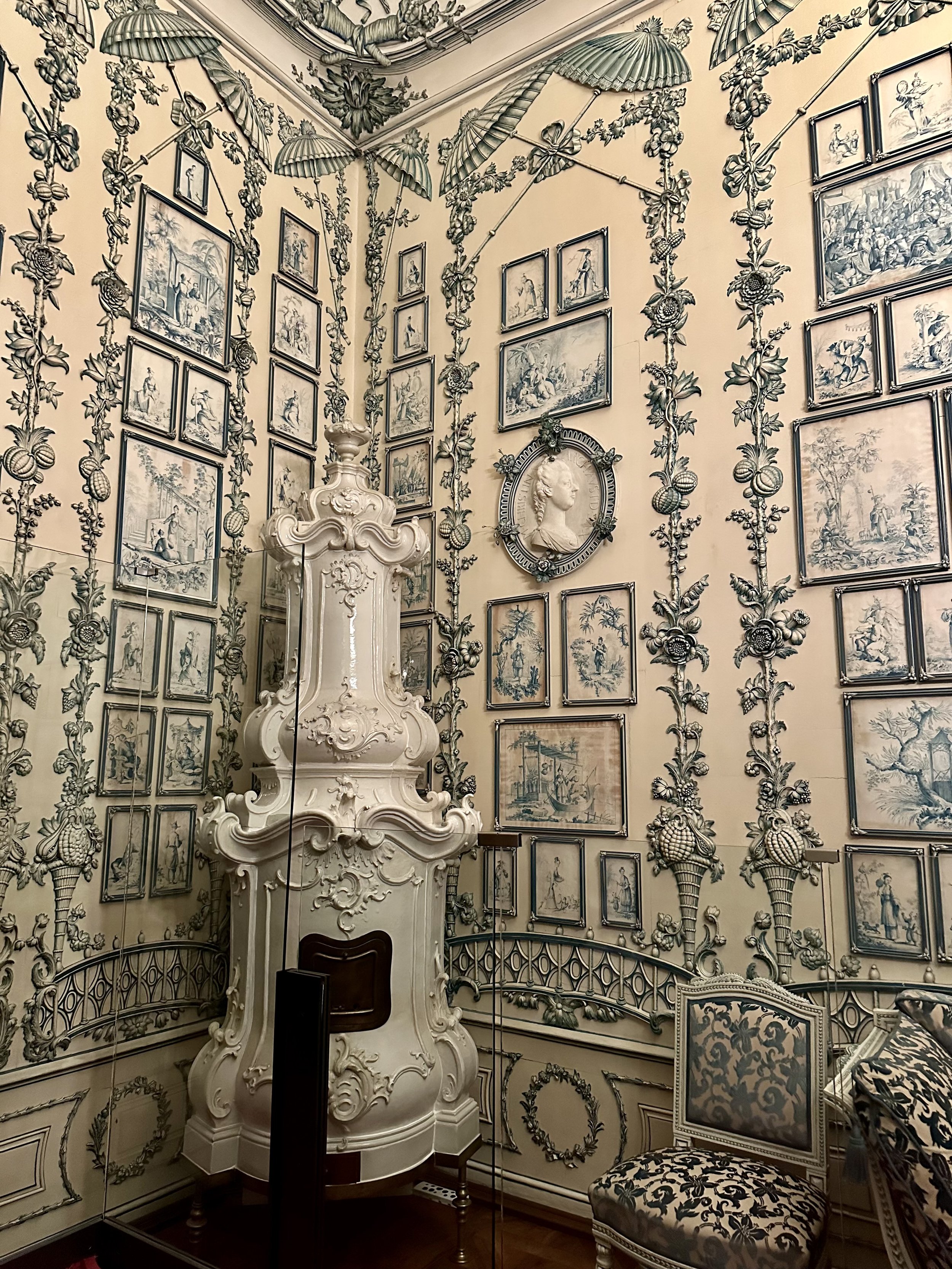

After touring the interior of the palace, we walked outside to view the gardens. Actually, they were so large it was more like walking through a park. The Great Parterre, with its flowerbeds dormant for the winter, stretched more than a kilometer to the Neptune Fountain. Larger-than-life-sized statues lined the garden’s perimeter. On the hill was a decorative colonnade called the Gloriette, probably the world’s largest lawn ornament. We agreed it would be fun to return in warmer weather, to see the gardens in bloom and try the hedge maze.
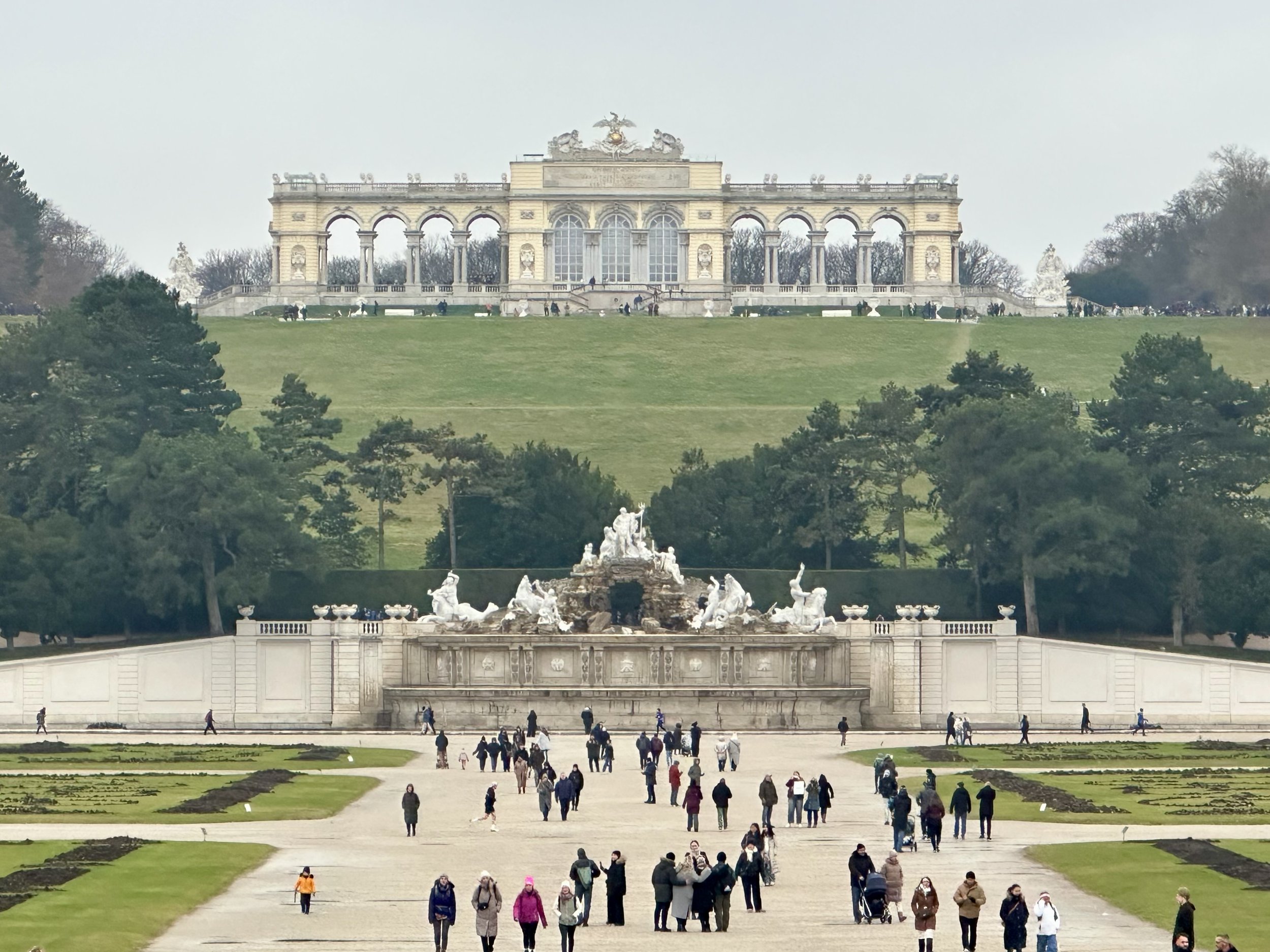
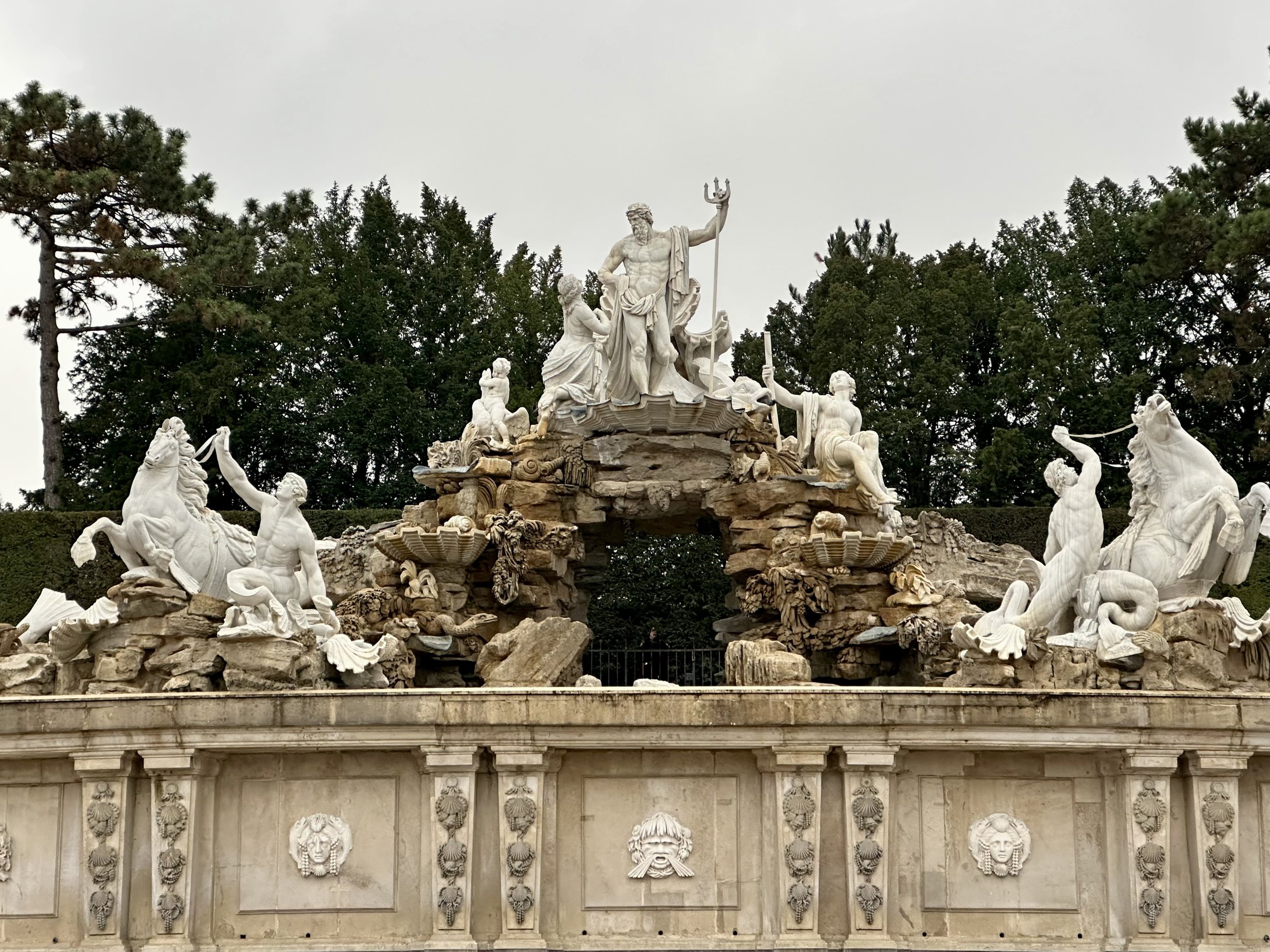

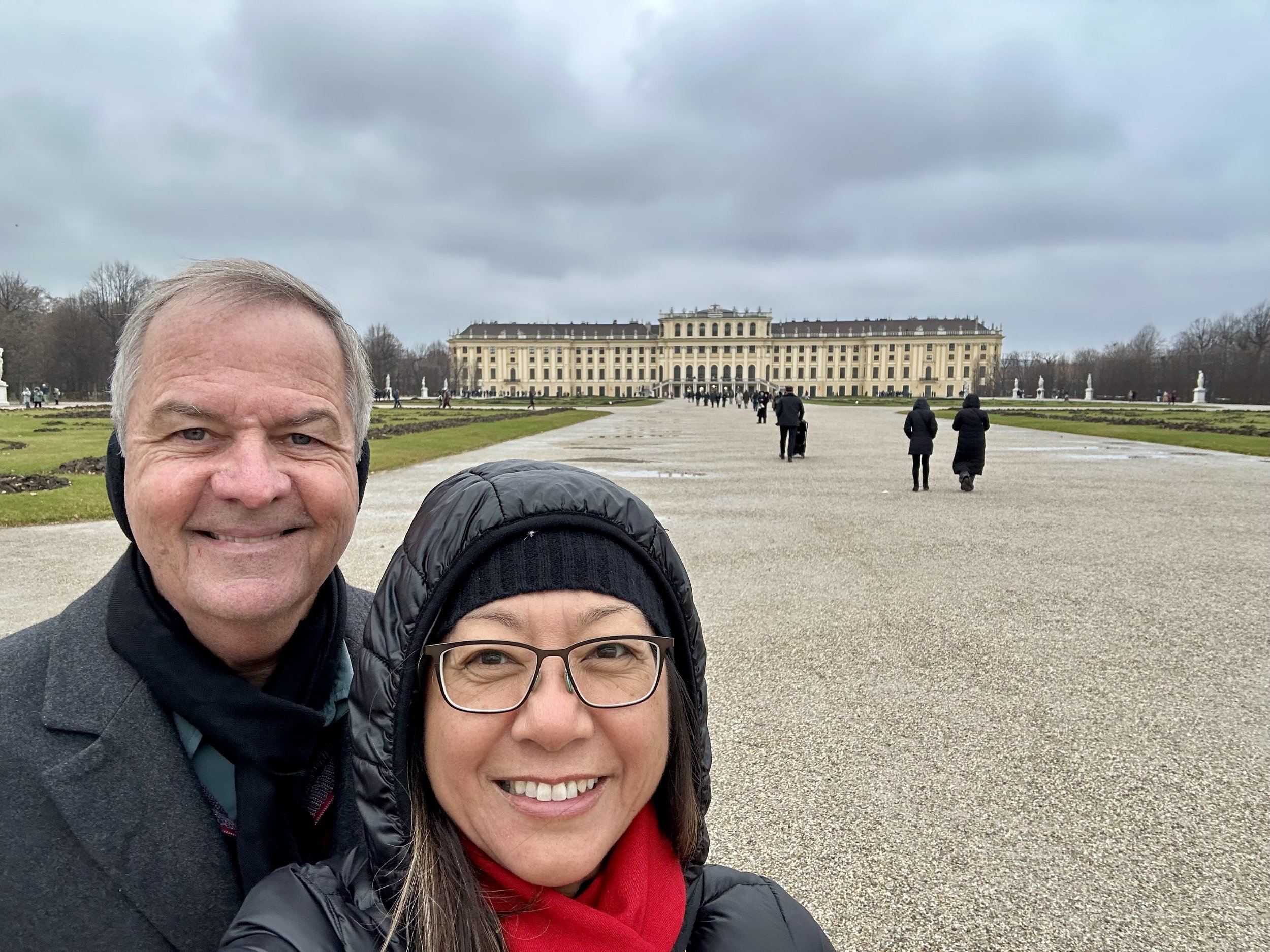
As we walked back to the train station, we encountered a busker who had his own interpretation of “fine art.” It was a fun way to wrap up our visit to Schönbrunn Palace.
